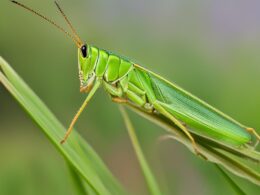If you want your elephant ear bulbs to maintain their vibrant growth, it’s essential to store them properly during the off-season. Storing these bulbs correctly not only preserves their health but also saves you money and allows you to enjoy their beauty year after year. In this article, we will explore the best methods for storing elephant ear bulbs during the winter.
During the off-season, it’s crucial to provide optimal storage conditions for your elephant ear bulbs. Whether you prefer overwintering the plants or keeping the bulbs themselves, following the right steps will ensure their successful regrowth in the next season. Let’s dive into the specific instructions for storing elephant ear bulbs and plants, so you can enjoy their vibrant foliage for years to come.
How to Overwinter Elephant Ear Plants
If you prefer to keep your elephant ear plants indoors as houseplants during the winter, there are a few key considerations you need to keep in mind to ensure their health and vitality. These plants require high light conditions to thrive, so make sure to place them in an area with ample sunlight. A south-facing window or a spot near a window with good exposure to natural light would be ideal for your elephant ear plants.
The soil moisture is another crucial factor in successfully overwintering your elephant ear plants. These plants prefer to be in consistently moist soil, so it’s important to regularly check the moisture level and water accordingly. You can assess the soil moisture by inserting your finger into the soil up to the second knuckle. If it feels dry, it’s time to water your plant.
Furthermore, elephant ear plants thrive in a humid environment. To provide them with the necessary humidity, you can use several methods. One option is to place a tray filled with water near the plant or use a humidifier in the room. Alternatively, you can create a microclimate by grouping your plants together, which helps to naturally increase humidity levels around them.
Remember, the goal is to mimic their natural habitat as much as possible to ensure their well-being during the winter months. By providing high light, maintaining soil moisture, and creating a humid environment, your elephant ear plants will continue to grow and thrive as houseplants.
- Place your elephant ear plant in a location with sufficient high light exposure.
- Monitor and maintain moist soil by checking the moisture level regularly and watering as needed.
- Ensure a humid environment by using methods such as placing a tray of water nearby or using a humidifier.
- Create a microclimate by grouping your elephant ear plants together to naturally increase humidity levels.
How to Overwinter Elephant Ear Bulbs
To ensure the successful overwintering of your elephant ear bulbs, it is crucial to follow the proper steps. By taking the necessary precautions, you can protect and preserve these bulbs during the winter season. Here’s a step-by-step guide on how to overwinter your elephant ear bulbs:
- Dig out the bulbs: Begin by carefully digging about a foot away from the base of the plant to avoid damaging the bulbs. Gently lift the plant and bulb from the soil, making sure to handle them with care.
- Clean the bulbs: After digging out the bulbs, gently rinse off any dirt from the surface. It is important to avoid scrubbing the bulbs, as this may cause damage. Cleaning the bulbs will help prevent the spread of pests or diseases during storage.
- Dry the bulbs: Once cleaned, allow the bulbs to dry in a warm and dark place for approximately one week. This will help remove excess moisture and prepare the bulbs for storage.
- Store the bulbs: After drying, wrap each bulb individually in paper to provide insulation and prevent moisture buildup. Select a cool, dry location for storing the bulbs during the winter season. Proper ventilation is essential to avoid the risk of rot or fungal growth.
- Regularly check for pests or rot: Throughout the storage period, it is crucial to regularly check the bulbs for any signs of pests or rot. Inspect the bulbs for soft spots, mold, or any other abnormalities. If you notice any issues, take appropriate measures, such as removing affected bulbs or treating them with organic pest control solutions.
By following these steps, you can ensure the health and vitality of your elephant ear bulbs during the winter months. Properly overwintered bulbs will be ready to regrow in the next growing season, allowing you to enjoy their beauty year after year. Take the time to care for your bulbs, and they will reward you with their stunning foliage.
Conclusion
Properly storing elephant ear bulbs during the off-season is essential for their successful regrowth the following year. By following the recommended steps of digging out undamaged bulbs, cleaning and drying them, and storing them in optimal conditions, you can ensure the vibrant growth of your elephant ear plants year after year. Regularly checking on the stored bulbs to prevent pests or rot is also crucial. With the right storage techniques, you can save money and enjoy the beauty of these plants season after season.
Can the Same Storage Method for Elephant Ear Bulbs be Used for Transplanting Ferns?
When it comes to transplanting ferns successfully, it is important to consider the specific storage method for elephant ear bulbs. While both plants may benefit from a similar cool, dry, and dark environment, it’s best to research and follow the specific requirements for each plant to ensure successful transplantation.










